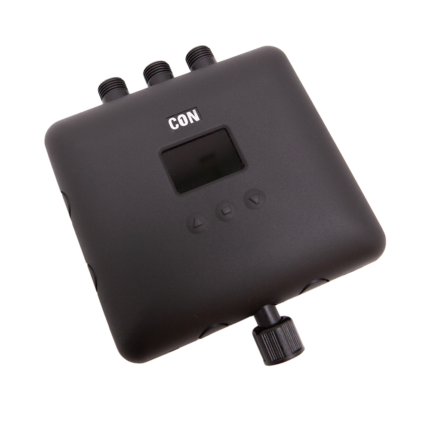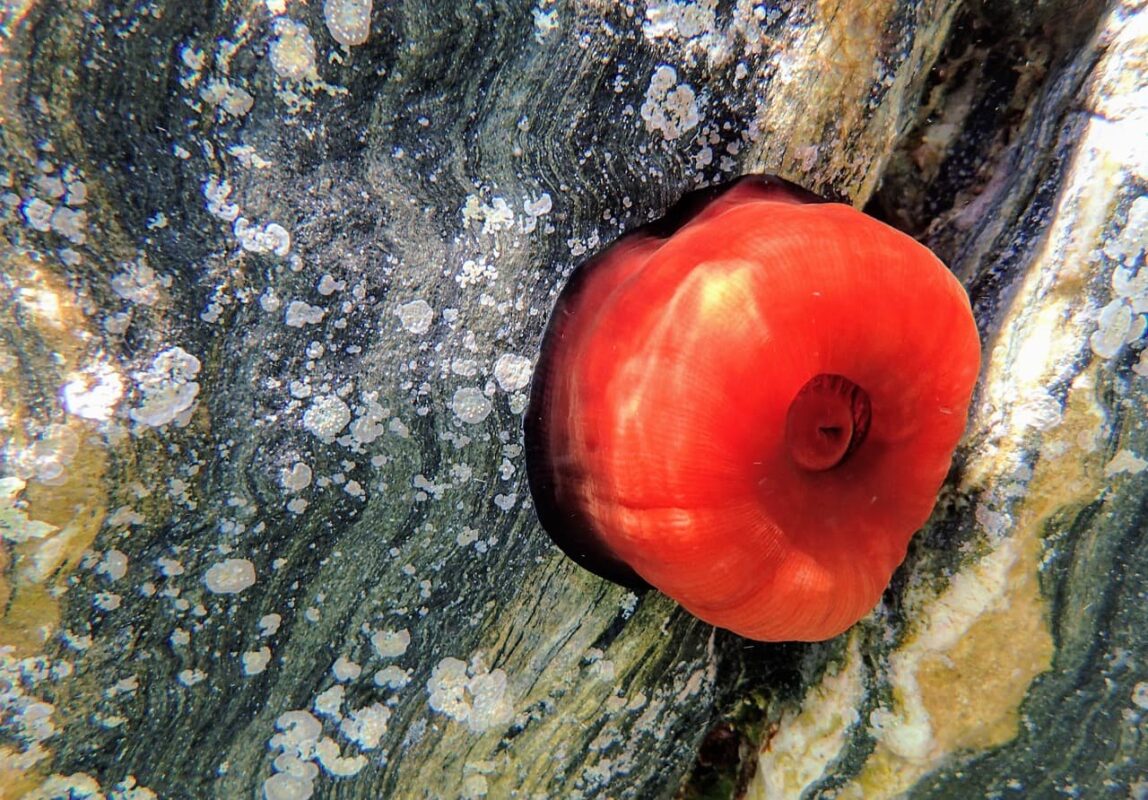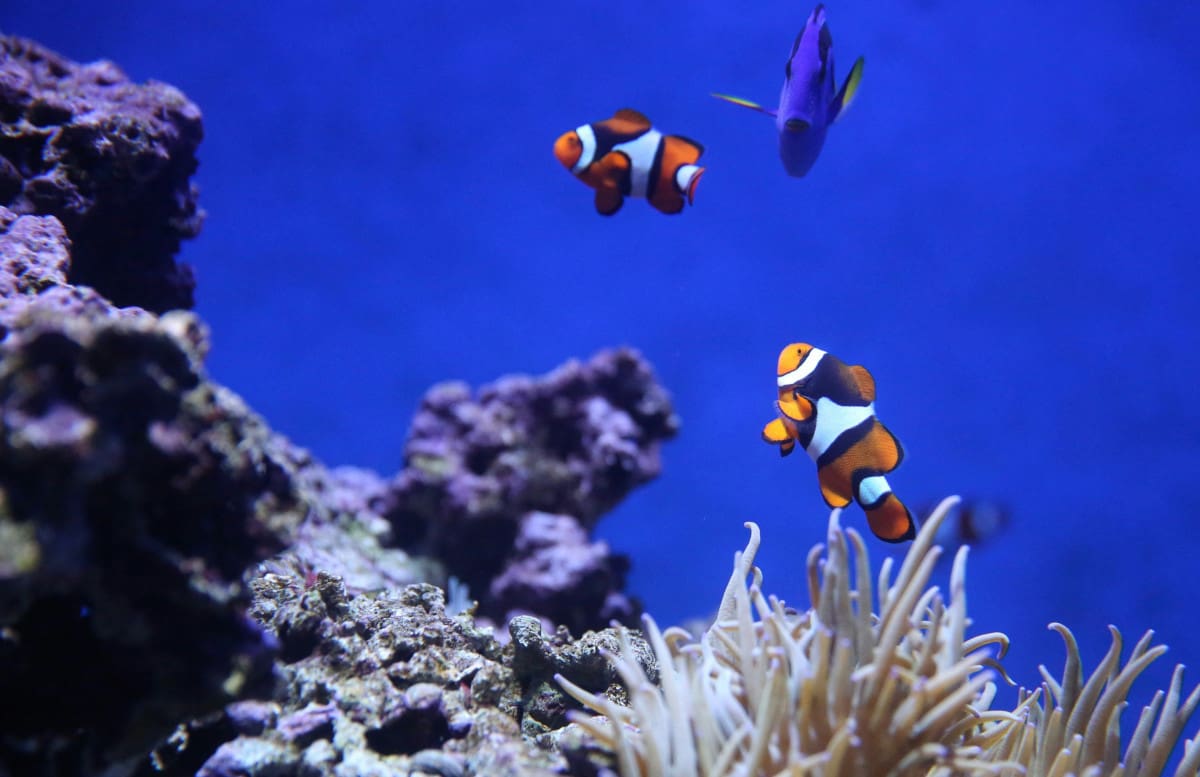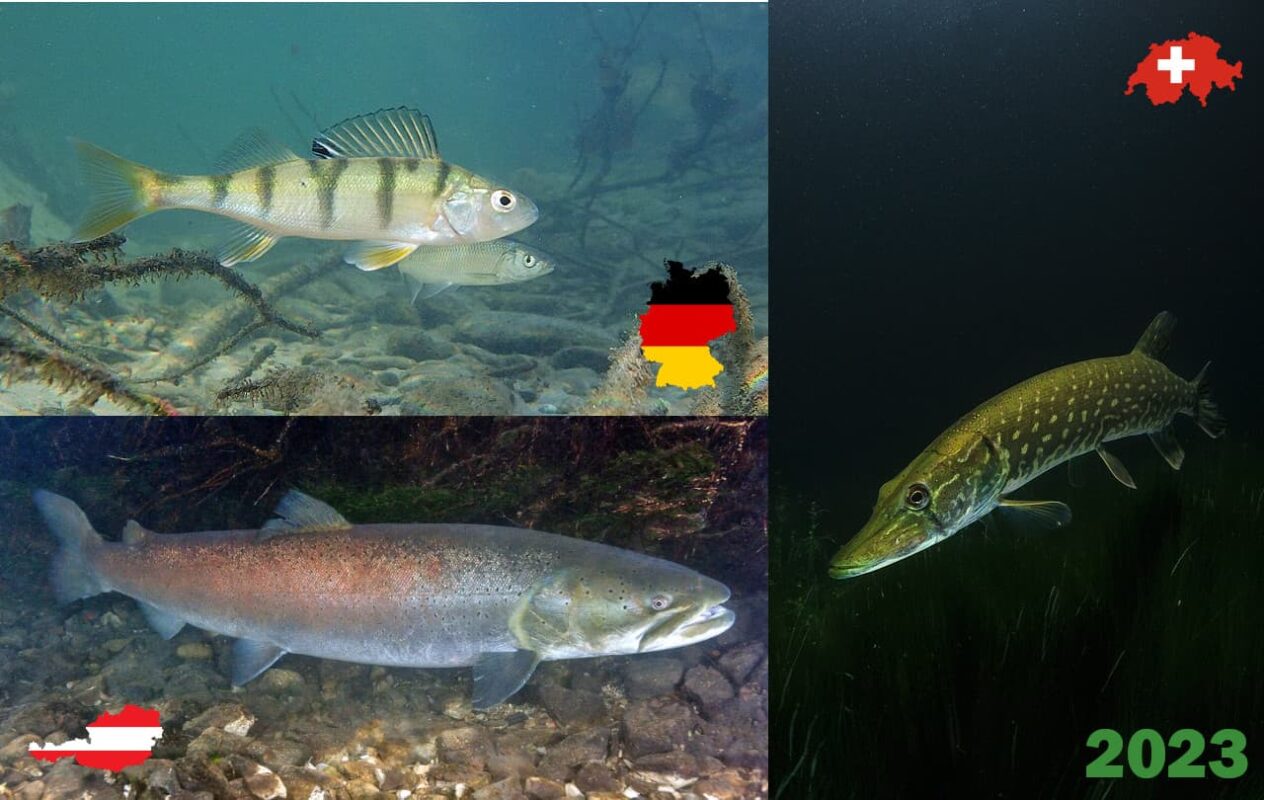Moving into a new aquarium is an adventure for both parties involved – fish and observer. And when it is even the arrival of a previously dominant blue tang to a defensive fish community, it becomes particularly exciting.
This article is part of a series of articles on “Experiences with saltwater aquariums”. In this loose collection, our author Andreas Berns — an aquarium consultant with many years of experience with aquariums of all types and sizes — reports anecdotally and entertainingly on special aquarium inhabitants, interesting integration projects and curious experiences. He also gives valuable tips on keeping the species described.
The following stories have been published so far:
Beware of poison: Lionfish in the reef aquarium
Pretty clever: a blue tang moves house & gets socialized
Tridacnidae: A myth in the sea
Tough little gemstone in the marine aquarium: the horse actinia Actinia equina
The prehistory
15 cm long, well-fed, powerful and absolute king in his kingdom – that was the first impression ‘King’ (my friend gives all his fish a name) — the blue tang — made on me. He was obviously quite rough with the other inhabitants of the aquarium, which was now far too small for him. This was evidenced by the respectful distance that all the other fish kept from him – regardless of whether it was feeding time or whether he was simply making his rounds through the aquarium.
‘King’ was looking for a new home, or to be more precise, his owner at the time wanted to get rid of him at all costs as he was too big for the aquarium, too aggressive for the other fish and absolutely deadly for all the new fish that had tried to share the aquarium with him in the last 6 months. He should therefore be moved to a new home as soon as possible.
Blue tang in nature and aquarium
First of all, a little information about the fish species: Blue tangs (Paracanthurus hepatus) have a very large distribution area in the wild. Specimens can be found from East Africa to Japan. Paracanthurus hepatus are (with a few restrictions) generally suitable fish for marine aquariums.
They can be kept quite easily both in fish-only aquariums and in reef aquariums stocked mainly with soft corals. It is not advisable to keep them in an aquarium with stony corals or special attention must be paid to the filtration, as the water load is very high due to the enormous metabolic rate of the doctors. This will either damage the corals in the long term or the doctors will have to be put on a ‘permanent diet’, which in turn would not be good for the fish.
In the wild, blue tangs often live in pairs or small shoals, always using a suitable jagged coral (usually Pocillopora eydouxi) as a refuge from predators. However, the term ‘territory-bound’ is to be defined quite generously: The territory, which is fiercely defended against conspecifics and other similarly coloured fish of the same size, in which the blue tangs hunt for plankton far above the seabed, often has a radius of 5 to 10 metres.
Always restless
SOLAR RAPTOR® SunStrip III 35 REPTILE black edition
- UV-A LED lighting for terrariums
- Brilliant light for excellent color rendering
- Versatile mounting options
- IMPORTANT: Additional power supply required for operation!
incl. VAT
plus shipping
The blue tangs swim restlessly through their territory almost all day long, much more intensively than other tangs. They are constantly snapping at floating food particles. This marathon of movement is only interrupted regularly to graze intensively on a wide variety of algae from different substrates.
Paracanthurus hepatus grow up to 30 cm long in the wild, but rarely reach more than 20 to 25 cm in the aquarium. Even in the aquarium, the fish seem to swim around restlessly, so it is essential that we provide the animals with sufficiently large tanks with plenty of free swimming space. They are usually incompatible with conspecifics in the aquarium, with the exception of their partner or other specimens that were introduced into the aquarium at the same time. Later socialization with conspecifics is usually only successful if significantly smaller specimens are added that do not claim territorial dominance.
Other aquarium inhabitants are dominated and often bullied by blue tangs, especially as they get older. The best way to avoid this is to use large aquariums in which different territorial zones are created through appropriate decoration, which should not be directly visible.
In principle, the described partial intolerance of older blue tangs is also not uncommon in many other fish species that we keep. However, only a few other species have such an effective and dangerous scalpel at their disposal to enforce their demands as the doctors. The most impressive and, in my opinion, the most natural way to keep them is in a very large tank in a shoal of up to 10 animals. It is important to ensure that the animals are kept together and are of approximately the same size!
The experiment
But now back to “King”: His behavior seemed explainable to me: a meanwhile too small aquarium with insufficient swimming space, slightly advanced age (3-4 years?), no defensive aggression partners and solitary keeping without conspecifics or other similarly sized roommates had turned him into a little tyrant.
The only question was whether the behavior patterns described would now remain permanently — or whether it would be possible to slowly “re-educate” him and make him socially acceptable again?
I wanted to give it a try and decided to move “King” to my large reef aquarium.
This tank is heavily subdivided with rock structures, so that different swimming and viewing areas are formed. In addition to a school of damselfish, the fish population here consists mainly of various large tangs (Zebrasoma flavescens, Zebrasoma desjardinii, Zebrasoma xanthurum) and rabbitfish (Siganus unimaculatus). After an extensive phase of power struggles, they have all been living together peacefully for over 4 years now; they not only co-exist, but even swim through the aquarium in shoals.
The fish stock has remained unchanged for about three years now, only a few shrimps and gobies have been added.
The move
discretion is the better part of valour
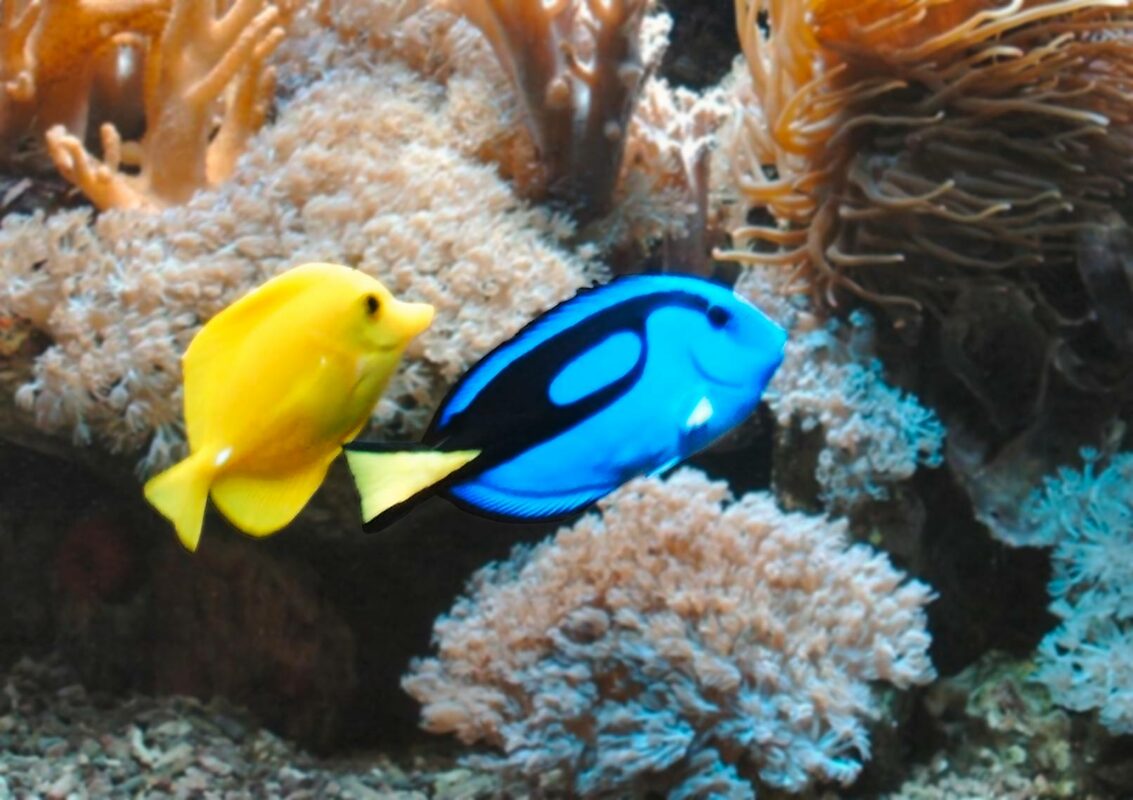
For his own protection, I therefore initially placed King in the main tank for a few hours using a glass cage (30x30x30) that had often been used successfully in the past. This allowed the old and new tank inhabitants to observe each other without any risk of injury. However, the period of mutual observation was very short:
Led by a Zebrasoma flavescens about 14 cm long, which is the clear ruler of the reef, the tangs pounced on the cage, assumed all kinds of imposing positions, bumped their noses on the glass and then apparently lost interest after just a few minutes. The blue tang “King” seemed to be above all the fuss – he simply lay flat on the bottom and didn’t move. His only interest was a rock cave in his field of vision, which is only accessible through a narrow gap about 4 cm wide and which he now stared at continuously. After about 3 hours, I broke off the protective measure and released “King” into his new home.
Even fish can act!
SOLAR STINGER® / SOLAR RAPTOR® CON1
- Control unit
- For all SolarStinger & SolarRaptor products with DRV power supply operation
- For creating sunrise/sunset and other scenarios
- 3 individually controllable outputs for connecting multiple products
While the other tangs had previously pretended to have no interest in the new comrade, they now pounced on the newcomer with all their might – again led by the Zebrasoma flavens – in order to maltreat him with their weapons after a brief display of imposing behavior. “King” did not live up to his name – or perhaps he did, because after suffering the first deep cut in his flank, the blue tang raced towards the retreat that had apparently already been selected from the cage and disappeared into it.
Two minutes later, his head poked out of the cave. And curiously – almost with a slightly mocking expression (pardon the human comparison) – he observed the life in the rest of the aquarium.
The other doctors impressed as usual, but were unable to achieve anything, seemingly losing interest and no longer caring about the newcomer after a short time.
During the following two days, the blue tang did not come out of its “shelter”, but it was constantly visible to the other fish – although not vulnerable.
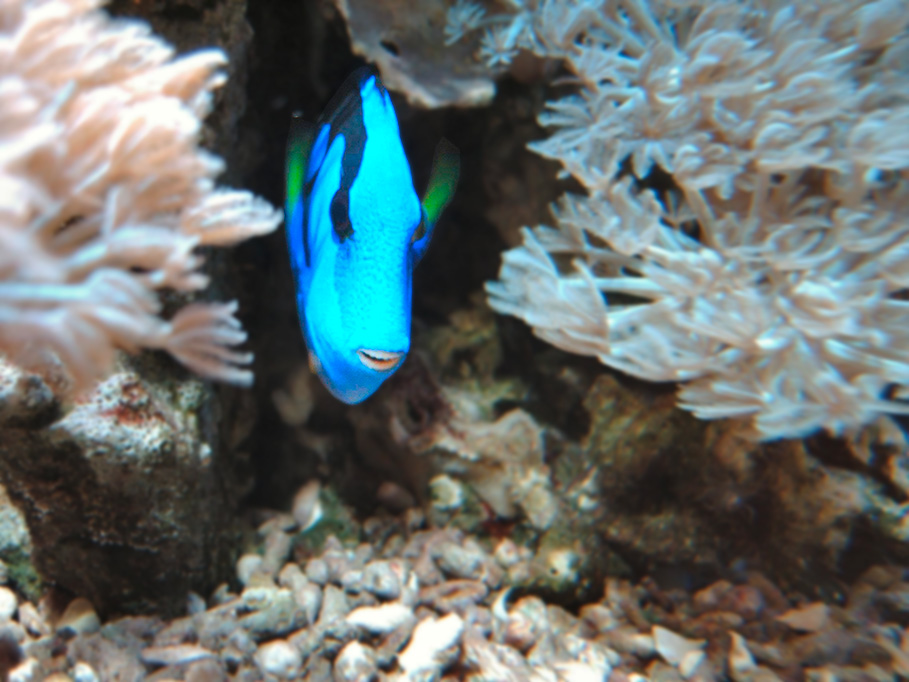
At the end of these two days, “King” left his den for the first time during a feeding session. After two minutes of hasty feeding, he quickly returned to his cave undisturbed.
From now on, he practiced this behavior for the next few days at every feeding, until suddenly after 3 days he no longer returned to the cave at the end of a feeding, but joined the other roommates.
In the meantime, they had lost all interest in the new resident: During the feedings they had more important things on their minds and during the in-between times they couldn’t harm him — so they left him alone.
That was different now, the newcomer was once again vulnerable! But unlike when “King” was introduced, it was now almost exclusively threatening gestures: The scalpels remained unused, imposing had to suffice. And now the blue tang joined in. Significantly emaciated, he shot towards the others at breakneck speed, turning off just before he reached them and giving them short fin strokes. And so the conflict was settled and put to bed.
There were never any serious injuries as a result. Today, all the Doctors swim peacefully together in the tank, with only the Zebrasoma flavens and “King” regularly making an impression – only to then graze peacefully next to each other on algae turf again.
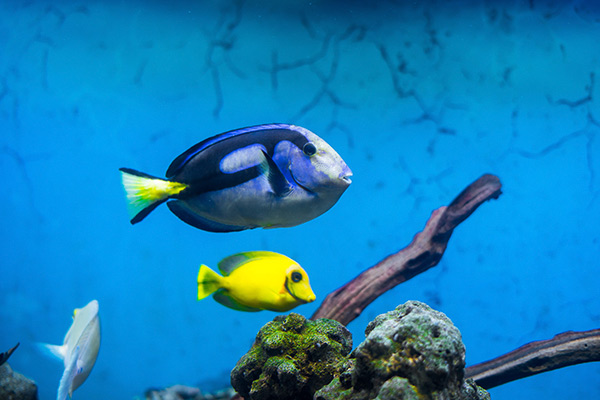
Conclusion
A previously dominant fish was successfully relocated to a new aquarium community with equally defensive fish. However, this was only possible because a suitable retreat was available for the “newcomer” during the acclimatization period.
In addition, the experiment only worked so well because the blue tang used a clever and unusual strategy. Unusual, because such a long “swimming break” is very rare for blue tang. Clever, because the constantly visible and at the same time unassailable presence for the other Doctors encouraged a process of habituation and acceptance that enabled the blue tang to survive.
By the way: “King” is no longer called that. – My fish don’t have names.



